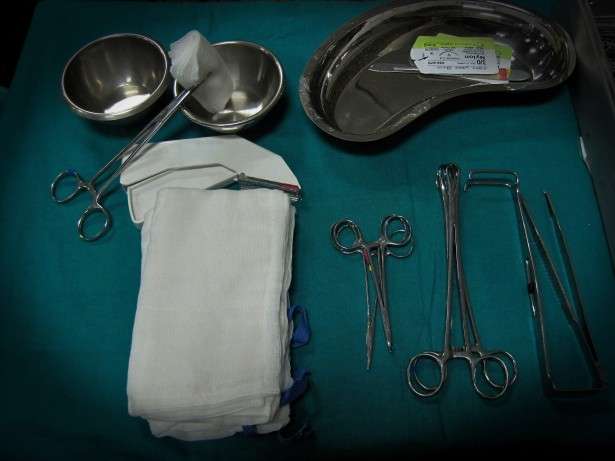This article has been reviewed according to Science X's editorial process and policies. Editors have highlighted the following attributes while ensuring the content's credibility:
fact-checked
proofread
More hysterectomies can be averted with earlier uterine artery embolization for postpartum hemorrhages, finds research

Early intervention with a minimally invasive treatment called uterine artery embolization (UAE) can help women avoid hysterectomy due to severe bleeding after childbirth, according to a new study being presented at the Society of Interventional Radiology Annual Scientific Meeting held March 23–28 in Salt Lake City.
"These findings are important and may help more women avoid hysterectomy and other very serious complications of uncontrolled hemorrhage," said lead author Younes Jahangiri, M.D., a third-year resident in the interventional and diagnostic radiology program at Corewell Health, in Grand Rapids, Michigan and Michigan State University College of Human Medicine graduate.
"As the medical community looks for ways to provide better care for women to address maternal health and peri-partum care, this is one more option on the table that could help many women."
The study was a retrospective review of 66 patients (median age, 31) who underwent UAE for uncontrolled postpartum hemorrhage at a single, high-volume medical center between 2014 and 2022. UAE successfully controlled postpartum hemorrhaging in 62 of the 66 patients (94%).
Four patients required hysterectomies to stop the bleeding, all of whom lost at least 2,400 ml blood prior to presentation for UAE and symptoms of diffuse intravascular coagulopathy, a clotting abnormality that can happen after large-volume hemorrhage due to rapid consumption of clotting factors.
Postpartum hemorrhage is a rare but potentially deadly complication of childbirth. To stop it, obstetricians will initially use conservative approaches to replace the lost blood or to promote clotting. If these measures are insufficient, hysterectomy is usually performed.
Alternatively, interventional radiologists can be brought in to perform UAE, injecting tiny particles into the arteries that supply blood to the uterus using fluoroscopic imaging guidance. Once placed in the arteries, the particles temporarily block blood flow to stem uterine bleeding.
"Based on these findings, we would encourage obstetricians to involve interventional radiologists early, to be ready to perform UAE if more conservative approaches are not managing postpartum hemorrhage," said senior author James Morrison, M.D., assistant professor of interventional radiology, at the MSUCollege of Human Medicine and program director of the interventional radiology residency program at Corewell Health.
Researchers in this study found a 36% incidence of post-embolization syndrome, which presents with abdominal pain and flu-like symptoms. The study found that it was more likely to occur in patients who experienced greater blood loss before embolization.
Dr. Jahangiri, Dr. Morrison and their colleagues plan to expand their research to include multiple institutions and ultimately to conduct a prospective study that examines longer-term outcomes of UAE.
More information: Abstract #189: Short-Term and Long-Term Outcomes of Uterine Artery Embolization for Treatment of Uncontrolled Post-Partum Hemorrhage. Y. Jahangiri, J. Haan, O. Lane, O. Close, J. Morrison. Annual Scientific Meeting, March 23–28, 2024. This abstract can be found at sirmeeting.org after the embargo time.




















